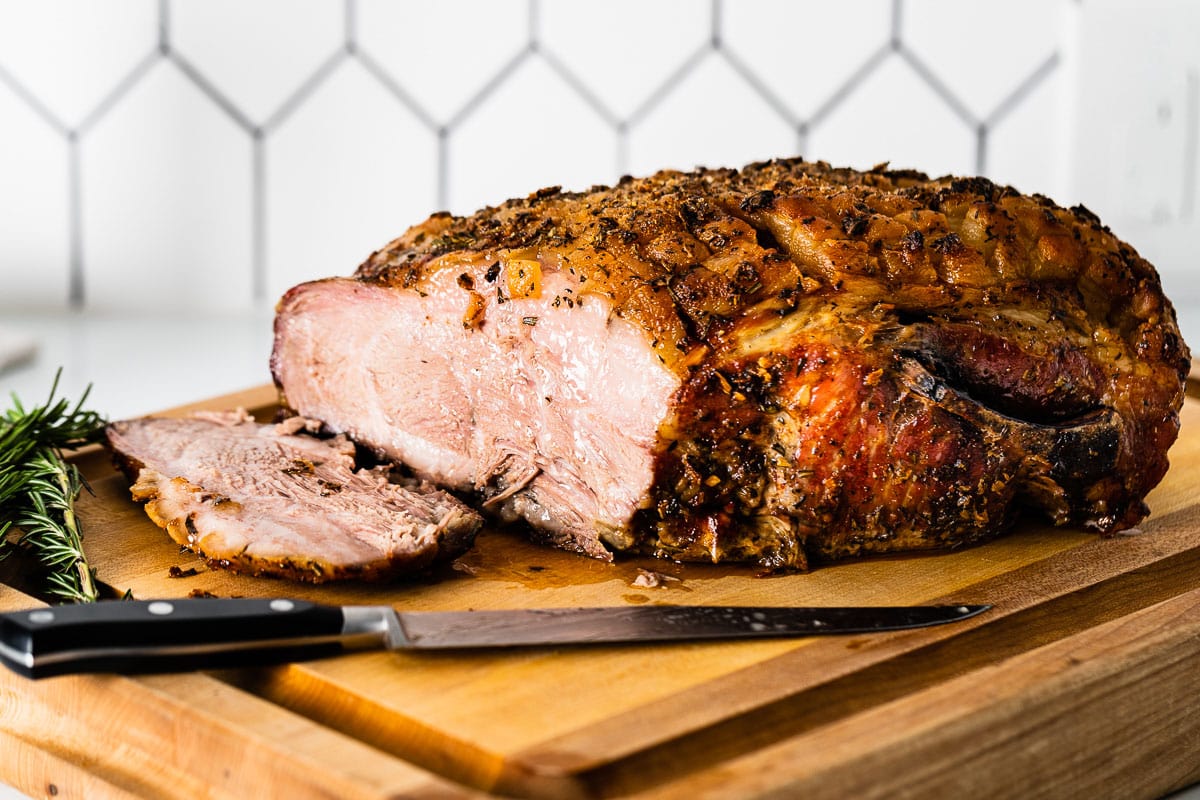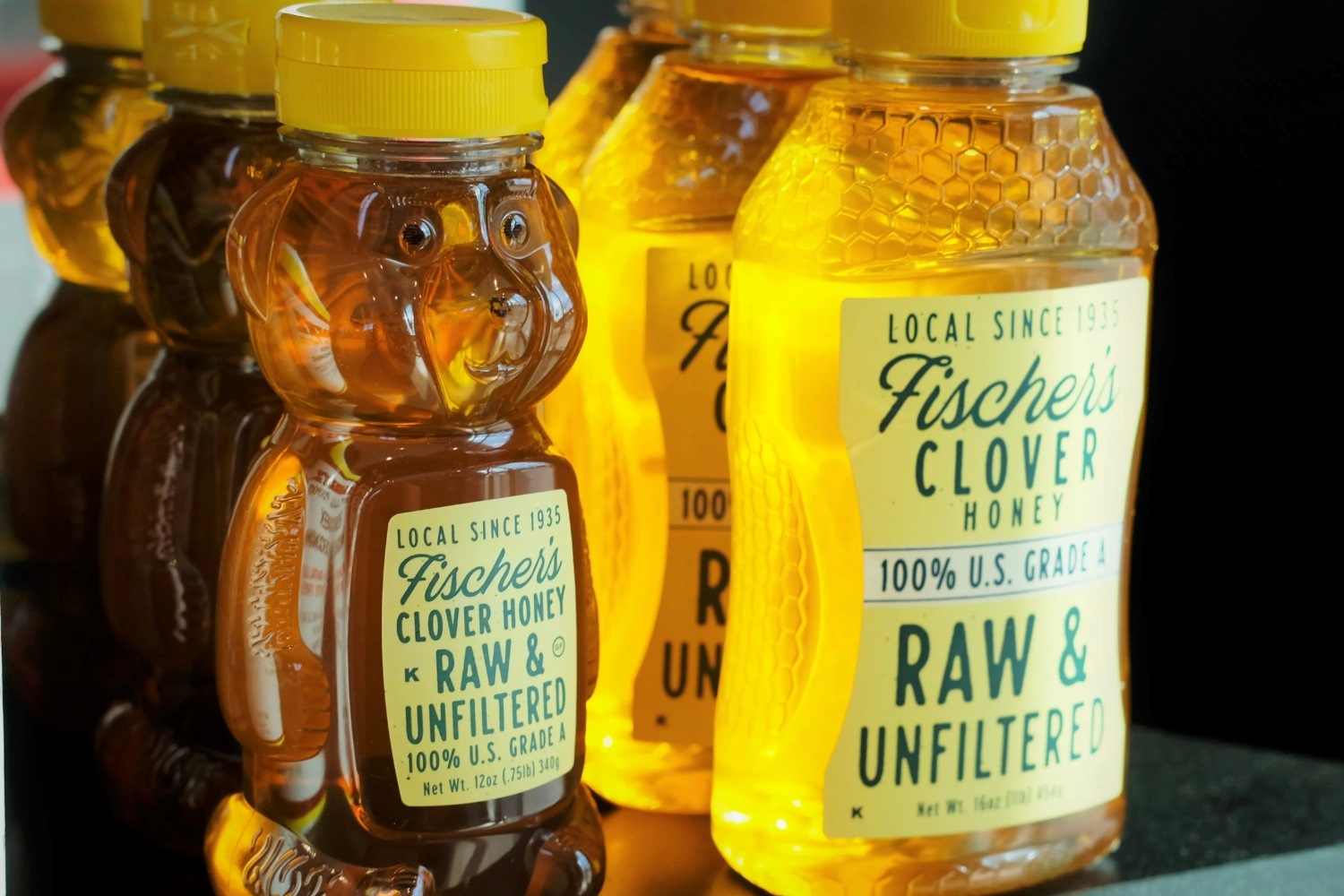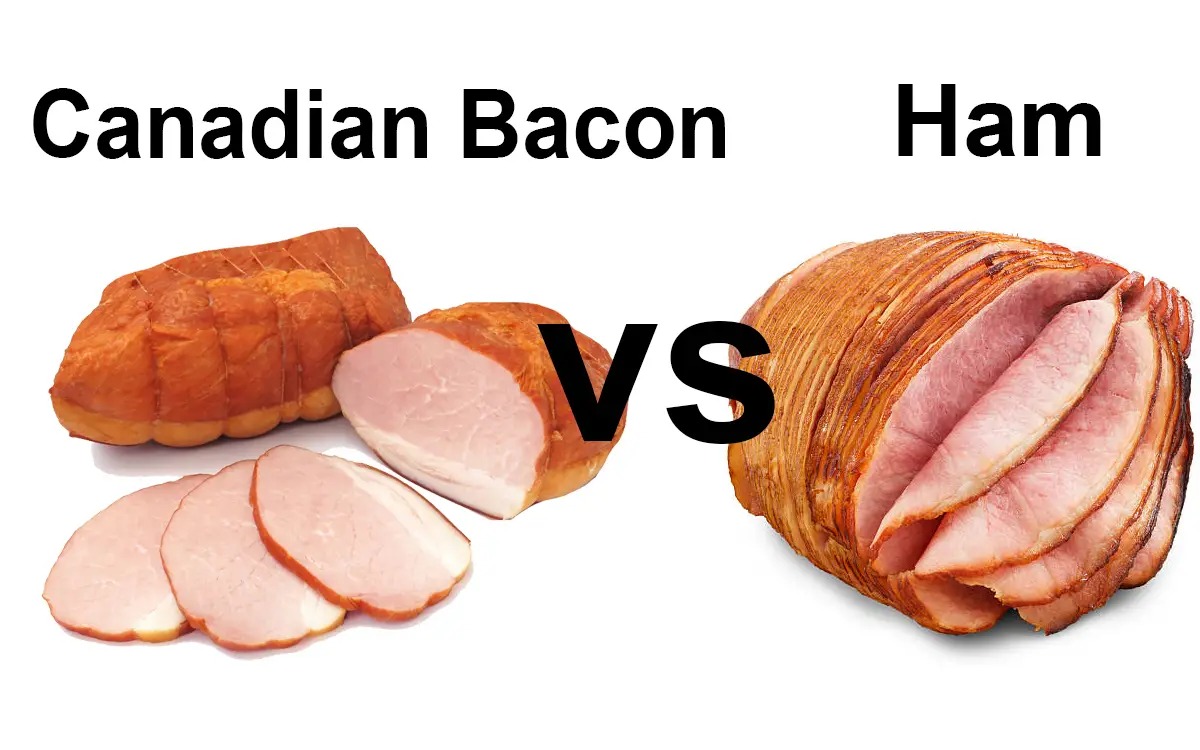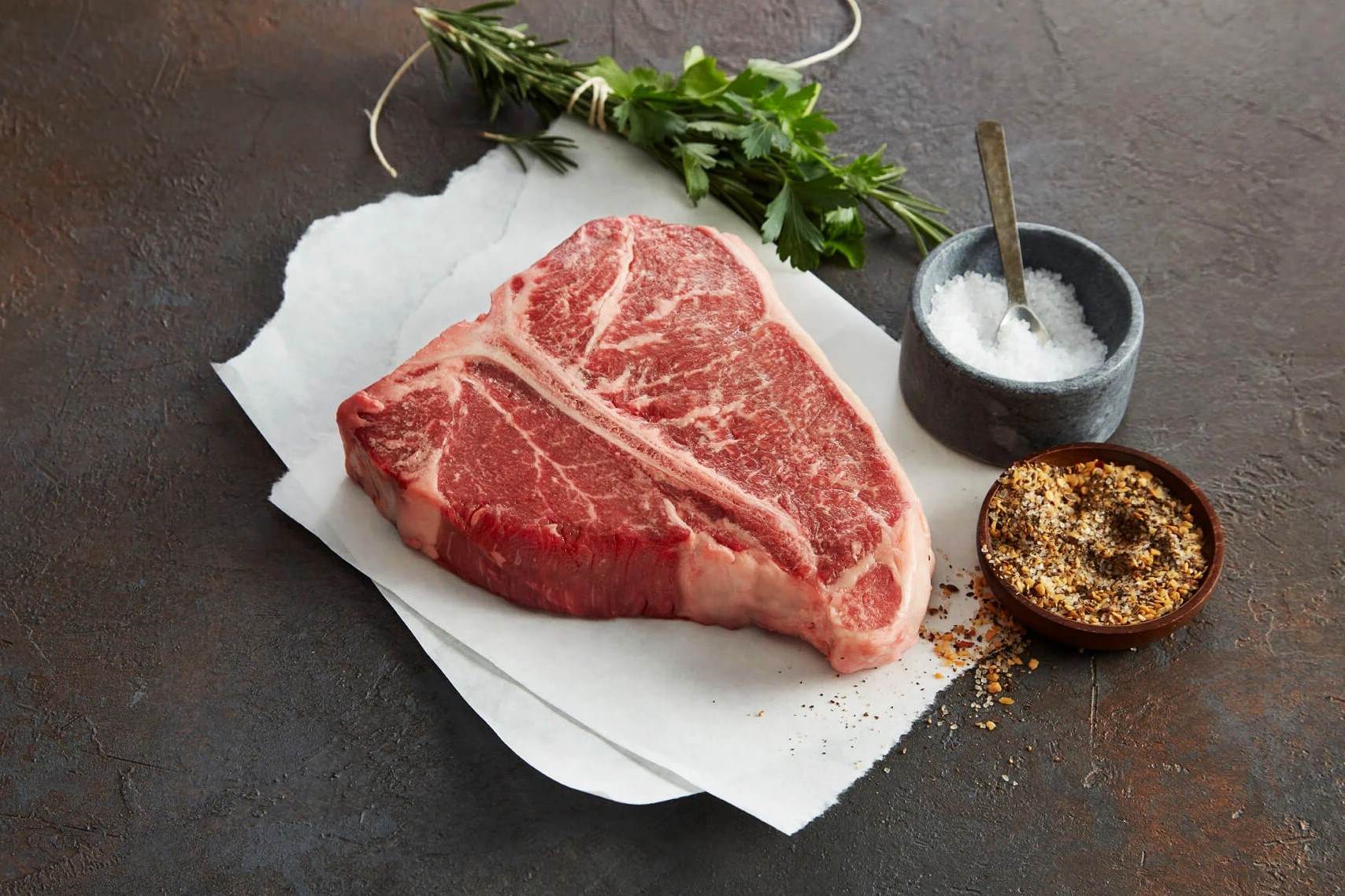Home>Food and Cooking>The Surprising Truth About Beef Steak Vs. Pork Steak
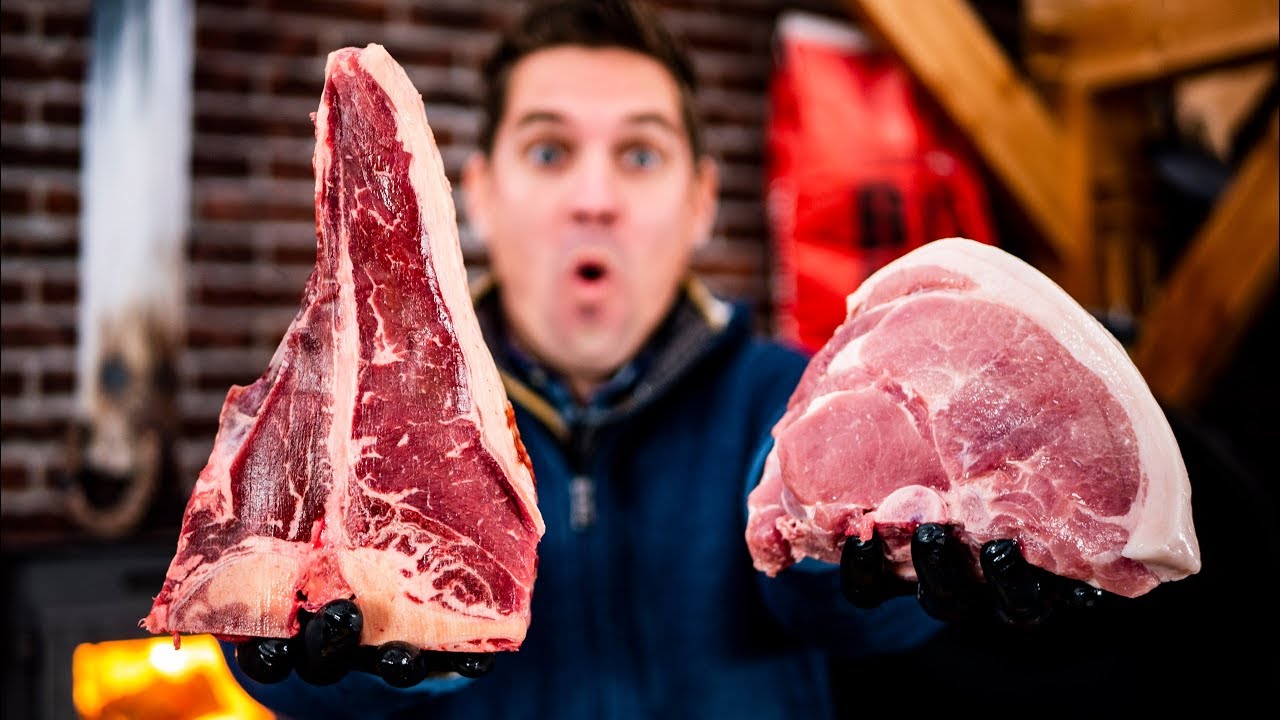

Food and Cooking
The Surprising Truth About Beef Steak Vs. Pork Steak
Published: February 11, 2024
Discover the differences between beef steak and pork steak in this insightful guide to food and cooking. Uncover the surprising truth about these popular cuts of meat.
(Many of the links in this article redirect to a specific reviewed product. Your purchase of these products through affiliate links helps to generate commission for Noodls.com, at no extra cost. Learn more)
Table of Contents
Introduction
When it comes to sizzling on the grill or being seared to perfection in a hot skillet, few things can rival the succulent appeal of a well-prepared steak. While beef steak has long been a staple on dinner tables and restaurant menus, pork steak has quietly been making its mark as a delectable alternative. The debate between beef steak and pork steak has sparked discussions among food enthusiasts, nutritionists, and environmentalists alike. Both varieties offer unique flavors, textures, and nutritional profiles, making them worthy contenders in the realm of culinary indulgence.
As we delve into the surprising truth about beef steak versus pork steak, we'll explore the nutritional disparities, flavor differentials, health considerations, and environmental impacts associated with each. Additionally, we'll uncover the cost comparison between these two beloved meats, shedding light on their accessibility and affordability. By the end of this exploration, you'll gain a deeper understanding of the distinct characteristics of beef and pork steak, empowering you to make informed decisions when selecting the perfect cut for your next culinary masterpiece.
Nutritional Comparison
When it comes to the nutritional content of beef steak versus pork steak, both varieties offer a rich array of essential nutrients that contribute to a well-rounded diet. Beef steak is renowned for its high protein content, making it an excellent choice for individuals looking to boost their protein intake. Additionally, beef steak is a significant source of essential vitamins and minerals, including iron, zinc, and B vitamins such as B12 and B6. These nutrients play pivotal roles in supporting overall health, from aiding in red blood cell formation to promoting optimal nerve function.
On the other hand, pork steak also boasts a commendable nutritional profile. It is a good source of high-quality protein, essential for muscle growth and repair. Furthermore, pork steak contains essential vitamins and minerals, including thiamine, selenium, and niacin. Thiamine, also known as vitamin B1, is crucial for converting food into energy, while selenium acts as a powerful antioxidant, protecting the body from oxidative stress.
In terms of fat content, beef steak tends to have a higher fat percentage compared to pork steak. While the marbling in beef steak contributes to its rich flavor and tenderness, it also means that beef steak generally contains more saturated fat. On the other hand, pork steak typically has a lower fat content, making it an attractive option for individuals seeking leaner protein sources.
It's important to note that the nutritional content of both beef and pork steak can vary depending on the specific cut and preparation method. For instance, opting for lean cuts of beef or pork and employing healthier cooking techniques, such as grilling or broiling, can further enhance the nutritional value of these meats.
In summary, both beef steak and pork steak offer valuable nutritional benefits, with each variety presenting a unique composition of protein, vitamins, and minerals. Understanding the distinct nutritional profiles of these meats empowers individuals to make informed dietary choices that align with their health and wellness goals.
Flavor and Texture
The debate between beef steak and pork steak extends beyond nutritional considerations, delving into the realm of flavor and texture. These sensory attributes play a pivotal role in shaping the overall dining experience and are often the determining factors in culinary preferences.
Beef steak, renowned for its robust and savory flavor, offers a distinct taste that is deeply satisfying to meat enthusiasts. The marbling of fat within the beef contributes to its rich flavor profile, infusing each bite with a luxurious and indulgent essence. Additionally, the texture of beef steak is characterized by its tenderness and juiciness, creating a melt-in-your-mouth sensation that is highly sought after by steak aficionados. Whether it's a tender filet mignon or a hearty ribeye, beef steak consistently delivers a gratifying combination of flavor and texture that has solidified its status as a beloved culinary delight.
On the other hand, pork steak presents a flavor profile that is subtly sweet and exceptionally versatile. The natural sweetness of pork lends itself well to a variety of flavor pairings and culinary techniques, making it an adaptable canvas for creative seasoning and marinades. When prepared with care, pork steak offers a tender and succulent texture that is both satisfying and comforting. Whether it's a thick-cut pork chop or a tenderloin steak, the inherent tenderness of pork makes it a delightful option for those seeking a milder yet equally enjoyable dining experience.
The flavor and texture of both beef and pork steak are further influenced by factors such as marbling, cooking method, and seasoning. For beef steak, the degree of marbling can significantly impact its flavor and tenderness, with well-marbled cuts often yielding a more pronounced and luxurious taste. Similarly, the cooking method employed, whether it's grilling, searing, or roasting, can further enhance the texture and flavor of both beef and pork steak, offering a spectrum of dining experiences to suit diverse palates.
In essence, the flavor and texture of beef steak and pork steak each offer a distinct and gratifying experience, catering to a wide range of culinary preferences. Whether you prefer the robust savoriness of beef or the subtle sweetness of pork, both varieties present an array of delectable options that are sure to tantalize the taste buds and elevate the dining experience.
Health Considerations
When it comes to making informed dietary choices, considering the health implications of consuming beef steak versus pork steak is paramount. Both varieties offer unique nutritional benefits and considerations that can impact overall well-being. Understanding these health considerations empowers individuals to align their dietary preferences with their health and wellness goals.
One of the primary health considerations associated with beef steak is its fat content. While the marbling in beef contributes to its rich flavor and tenderness, it also means that beef steak generally contains higher levels of saturated fat. Excessive consumption of saturated fat has been linked to an increased risk of heart disease and other cardiovascular conditions. Therefore, individuals with specific dietary restrictions or those aiming to minimize their saturated fat intake may need to exercise moderation when incorporating beef steak into their meals.
On the other hand, pork steak tends to have a lower fat content compared to certain cuts of beef, making it an appealing option for individuals seeking leaner protein sources. However, it's important to note that the health considerations associated with pork extend beyond fat content. Pork products, particularly when processed or cured, may contain higher levels of sodium and preservatives, which can have implications for individuals monitoring their sodium intake or managing certain health conditions.
In addition to fat content and sodium levels, the preparation and cooking methods employed for both beef and pork steak can significantly impact their health implications. Grilling, broiling, or roasting are generally considered healthier cooking techniques, as they allow excess fat to drain away from the meat. Conversely, frying or breading meats can increase their calorie and fat content, potentially compromising their healthfulness.
Furthermore, individuals with specific dietary preferences or health conditions, such as those following a low-sodium diet or managing cholesterol levels, may need to consider the nutritional content and potential health impacts of beef and pork steak when planning their meals.
In summary, the health considerations associated with beef steak versus pork steak encompass factors such as fat content, sodium levels, and cooking methods. By being mindful of these considerations, individuals can make informed choices that align with their dietary needs and contribute to their overall health and well-being. Whether it's opting for leaner cuts, moderating portion sizes, or exploring healthier cooking techniques, understanding the health implications of beef and pork steak empowers individuals to savor their culinary indulgences while prioritizing their health.
Environmental Impact
The environmental impact of beef steak versus pork steak is a topic that has garnered significant attention in discussions surrounding sustainable food production and consumption. Both beef and pork production have distinct implications for the environment, encompassing factors such as land use, water consumption, greenhouse gas emissions, and overall ecological footprint.
Beef production, particularly from conventional feedlot operations, has been associated with substantial environmental impacts. The rearing of cattle for beef requires significant land resources for grazing and feed production. This demand for land can contribute to deforestation and habitat loss, particularly in regions where large-scale cattle ranching is prevalent. Additionally, the methane emissions from cattle, a byproduct of their digestive processes, contribute to greenhouse gas emissions, further exacerbating the environmental footprint of beef production.
In contrast, pork production generally requires less land and water compared to beef production. Pigs can be raised in more confined spaces, utilizing feed that is more resource-efficient. As a result, the environmental impact of pork production, in terms of land use and water consumption, is relatively lower compared to beef production. Furthermore, advancements in sustainable pig farming practices, such as waste management and resource optimization, have contributed to reducing the ecological footprint of pork production.
When considering the environmental impact of beef and pork production, it's essential to acknowledge the role of sustainable farming practices and responsible land management. For beef production, embracing regenerative grazing techniques and reducing reliance on feedlot operations can mitigate the environmental impact by promoting soil health, biodiversity, and carbon sequestration. Similarly, implementing efficient waste management systems and optimizing feed utilization in pork production can contribute to reducing the overall ecological footprint of pork farming.
Furthermore, consumer choices and preferences play a crucial role in shaping the environmental impact of beef and pork consumption. Opting for sustainably sourced beef and pork products, supporting local and organic farming practices, and minimizing food waste can collectively contribute to reducing the environmental footprint associated with meat consumption.
In essence, the environmental impact of beef steak versus pork steak extends beyond the dining table, encompassing broader implications for land use, water resources, and greenhouse gas emissions. By understanding the environmental considerations associated with beef and pork production, individuals can make informed choices that align with their values of sustainability and environmental stewardship. Whether it's embracing plant-based alternatives, supporting sustainable farming practices, or advocating for responsible meat production, each decision contributes to shaping a more environmentally conscious approach to food consumption.
Cost Comparison
When it comes to the cost comparison between beef steak and pork steak, several factors come into play, influencing the affordability and accessibility of these beloved meats. The pricing of beef and pork steak can vary based on factors such as cut, quality, and market demand, presenting consumers with a spectrum of options to suit their budget and culinary preferences.
Beef steak, known for its premium reputation and diverse range of cuts, often commands a higher price point compared to pork steak. Cuts such as ribeye, tenderloin, and T-bone are prized for their tenderness and flavor, reflecting their elevated pricing in the market. Additionally, factors such as aging, marbling, and grading contribute to the pricing of beef steak, with higher grades and superior marbling often correlating with increased cost.
On the other hand, pork steak offers a more budget-friendly alternative, providing consumers with an array of affordable cuts that deliver on both flavor and tenderness. From pork chops to pork shoulder steaks, the versatility of pork steak extends to its accessibility, making it an attractive option for individuals seeking a cost-effective yet satisfying protein source. Furthermore, the affordability of pork steak allows for greater flexibility in meal planning and culinary exploration, catering to a diverse range of dietary preferences and budgetary considerations.
It's important to note that the cost comparison between beef and pork steak can also be influenced by regional factors, market conditions, and seasonal fluctuations. For instance, the availability of specific cuts, promotional offers, and local sourcing can impact the pricing of both beef and pork steak, presenting consumers with opportunities to make cost-conscious decisions without compromising on quality.
In summary, the cost comparison between beef steak and pork steak reflects a balance between premium indulgence and budget-friendly options. While beef steak may represent a luxurious culinary experience with its premium cuts and elevated pricing, pork steak offers a versatile and affordable alternative that caters to a wide range of consumer preferences. By understanding the cost differentials and market dynamics associated with beef and pork steak, individuals can make informed choices that align with their budgetary considerations while savoring the delectable essence of a perfectly prepared steak.
Conclusion
In conclusion, the debate between beef steak and pork steak unveils a rich tapestry of culinary, nutritional, and environmental considerations, offering a nuanced exploration of these beloved meats. Both beef and pork steak present unique attributes that cater to diverse palates and dietary preferences, making them indispensable components of the culinary landscape.
From a nutritional standpoint, beef steak and pork steak each offer a wealth of essential nutrients, including high-quality protein, vitamins, and minerals. While beef steak tends to have a higher fat content, particularly saturated fat, pork steak provides a leaner alternative, appealing to individuals seeking a lighter protein source. Understanding the distinct nutritional profiles of these meats empowers individuals to make informed dietary choices that align with their health and wellness goals.
The flavor and texture of beef steak and pork steak further contribute to their allure, with beef boasting a robust savoriness and luxurious tenderness, while pork offers a subtly sweet and versatile dining experience. These sensory attributes play a pivotal role in shaping the overall enjoyment of a steak, catering to a spectrum of culinary preferences and creative culinary expressions.
Health considerations associated with beef and pork steak encompass factors such as fat content, sodium levels, and cooking methods, prompting individuals to be mindful of their dietary choices and culinary practices. By understanding the health implications of beef and pork steak, individuals can savor their culinary indulgences while prioritizing their health and well-being.
The environmental impact of beef and pork production underscores the broader implications of meat consumption, highlighting the importance of sustainable farming practices and responsible land management. By embracing sustainable sourcing and supporting environmentally conscious farming practices, individuals can contribute to shaping a more sustainable approach to meat consumption.
Finally, the cost comparison between beef steak and pork steak reflects a balance between premium indulgence and budget-friendly options, offering consumers a spectrum of choices to suit their culinary preferences and financial considerations.
In essence, the surprising truth about beef steak versus pork steak transcends mere culinary discourse, encompassing a tapestry of nutritional, sensory, health, environmental, and economic considerations. By delving into the distinct characteristics of beef and pork steak, individuals gain a deeper appreciation for these culinary staples, empowering them to make informed choices that resonate with their values, preferences, and well-being. Whether it's savoring the robust savoriness of a perfectly seared beef steak or relishing the tender succulence of a carefully prepared pork steak, both varieties offer a delightful journey through the artistry of culinary indulgence.


